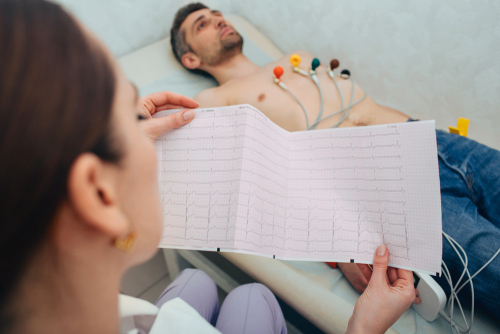According to the Association for Applied Psychophysiology and Biofeedback (AAPB), “Biofeedback is a process that enables an individual to learn how to change physiological activity for the purposes of improving health and performance. Precise instruments measure physiological activity such as brainwaves, heart function, breathing, muscle activity, and skin temperature. These instruments rapidly and accurately “feed back” information to the user. The presentation of this information — often in conjunction with changes in thinking, emotions, and behavior — supports desired physiological changes. Over time, these changes can endure without continued use of an instrument.”
What are the Primary Responsibilities of a Applied Psychophysiology Professional?
Biofeedback refers to a group of procedures that utilize electronic instruments to record and display relevant patient information regarding the flow of activity from various body processes of which the person is usually unaware. The primary goal of biofeedback is to guide patients to gain voluntary control over physiological activity that is typivcally considered involuntary or has become involuntary through accident or disease. These professionals use the following tools to better display to patients their body processes:
- Surface electromyography
- Electroencephalography
- Blood pressure measurement
- Skin temperature measurement
- Skin conductance measurement
- Systematic relaxation training
- Desensitization techniques
- Cognitive-behavioral reeducation
- Electrocardiology
Biofeedback techniques are of proven value in the treatment of a variety of psychophysiological, mood and behavioral conditions such as:
- Migraine headaches
- Tension headaches
- Chronic pain
- Disorders of the digestive system
- Incontinence
- High blood pressure
- Heart arrhythmia
- Attention deficit disorder/attention deficit hyperactivity disorder
- Raynaud’s disease
- Epilepsy
- Paralysis, spinal cord and other movement disorders
- Anxiety disorders, excessive tension and an inability to achieve relaxation
- Sleep disorders
Where do Applied Psychophysiology Professionals Typically Work?
These professionals can be found working in hospitals, research labs, colleges and universities, private practice, rehabilitation facilities, long-term care facilities and a number of other locations.
What training is needed to become a Applied Psychophysiology Professional?
Psychophysiology Professionals are typically doctoral level practitioners, although some of these Professionals can find employment with a Master’s Level Degree. An important part of the training to become a Psychophysiologist is an internship or fellowship experience upon graduation.
How Much Money Can I Earn As a Applied Psychophysiology Professional?
According to Glassdoor.com, a list of salaries anonymously posted by both employers and professionals, a Psychophysiology Professional can expect to earn between $58,000 and $63,000 annually depending upon region, experience and place of employment.
Are There Any Professional Organizations for Applied Psychophysiology Professionals?
The most notable Organizations for Psychophysiology are the Association for Applied Psychophysiology and Biofeedback (AAPB), The Biofeedback Certification Institution of America (BCIA) and the International Society for Neurofeedback and Research (ISNR).
While many laypersons are unaware of the power of Biofeedback and Psychophysiology, most clinicians know the inherent power it possesses. By teaching patients to control their involuntary bodily processes, they can be treated for a myriad of diseases, pain disorders and chronic ailments. For those individuals who appreciate the systems of the body and how they can control our experiences, the field of Applied Biofeedback and Psychophysiology is an excellent and growing field.

